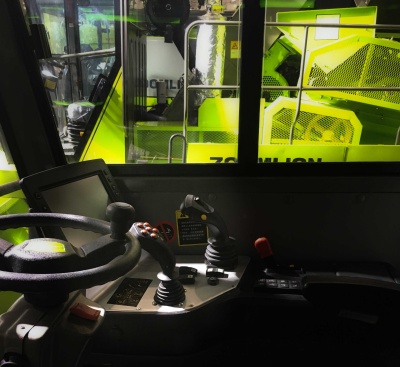In the realm of industrial control, custom industrial joysticks are essential tools. They enable operators to interact with machinery and equipment in a highly personalized and precise manner, playing a pivotal role in various industrial applications, from manufacturing and robotics to aerospace and transportation. However, the cost of these custom - made devices can vary significantly. Let\\\\\\\\\\\\'s explore the key factors that influence their price.

Complexity of Design
The design of a custom industrial joystick is a primary determinant of its price. A basic industrial joystick, like a two - axis controller for a simple conveyor belt operation, generally comes at a lower cost. These typically feature a straightforward mechanical structure and a basic circuit board.
On the other hand, when the design becomes more complex, the price escalates. Joysticks designed for professional flight simulation often have multiple axes, programmable buttons, and advanced force - feedback mechanisms. A professional - grade flight simulator joystick with six axes of movement, a slew of programmable buttons, and a high - quality force - feedback system can cost upwards of $500. The intricate engineering required to design a joystick that accurately mimics the feel of a real - world aircraft control stick, for example, involves sophisticated mechanical and electronic design work, which drives up the cost.
Quality of Materials
The materials used in constructing a custom industrial joystick have a substantial impact on its price. Lower - cost ones may be fabricated with plastic components that are mass - produced. Although these materials can serve their purpose, they may lack the durability and tactile feel of higher - quality materials. A basic plastic - bodied industrial joystick might be priced in the range of 20−100, depending on its features.
In contrast, custom joysticks crafted from high - quality metals and precision - engineered components are more expensive. Metal - framed joysticks, often used in industrial and professional applications, offer greater durability and stability. The use of premium - grade potentiometers (the components that measure the position of the joystick) and high - quality switches for buttons also adds to the cost. These materials not only enhance the longevity of the joystick but also improve its performance, making it more suitable for demanding applications.
Brand and Reputation
The brand behind a custom joystick can also impact its price. Well - established brands that have a reputation for quality and reliability often charge a premium. These brands have invested time and resources into research and development, ensuring that their products meet high standards. For example, a custom joystick from a well - known brand in the flight simulation industry, which has a long - standing reputation for producing accurate and durable controllers, may cost more than a similar - looking joystick from an unknown or lesser - known brand.
Brands that are associated with innovation, such as those that introduce new features or improve on existing technologies, may also price their custom joysticks higher. A brand that has developed a unique force - feedback algorithm or a new type of joystick mechanism that provides a more immersive experience will likely charge more for its products. However, consumers may be willing to pay this premium for the assurance of a better - performing and more reliable product.
Production Volume
The volume of production has a direct influence on the price of custom industrial joysticks. When industrial joysticks are produced in large quantities, the cost per unit is typically lower due to economies of scale. Mass - produced ones, often designed for more common industrial applications like basic factory automation, can be obtained at relatively affordable prices.
In contrast, custom joysticks that are produced in small batches or are one - off creations are significantly more expensive. These are often tailored to very specific needs, such as a custom joystick for a unique industrial control application or a highly specialized flight simulator for a research institution. The high cost of setting up the production process for a small number of units, along with the need for individualized attention during manufacturing, means that these custom joysticks can cost thousands of dollars.
When considering the purchase of a custom industrial joystick, consumers must carefully evaluate their requirements and budget. By taking into account factors such as design complexity, material quality, brand reputation, and production volume, they can make an informed decision and select the custom industrial joystick that best suits their industrial needs.